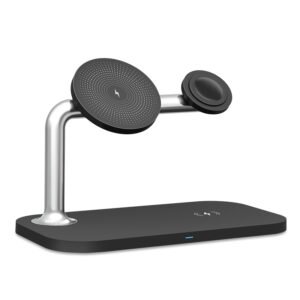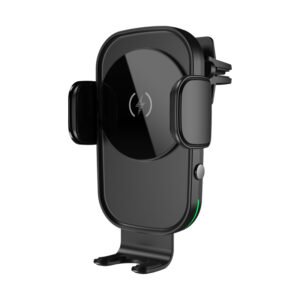As wireless charging technology continues to gain momentum, manufacturers are exploring ways to upgrade their products, including the surface material of the chargers. In this blog, we will discuss some innovative methods of surface material upgrade in wireless charging technology and how CowinLink can utilize them to create unique and exceptional products.
One of the most popular approaches to upgrading wireless charger material is to use eco-friendly materials. CowinLink has already implemented this method by using cloth and PU leather as surface materials. Eco-friendly materials are not only sustainable, but they also provide a natural and comfortable feel to the product. Furthermore, these materials can be easily customized with different patterns and textures, giving customers a range of options to choose from.
Another method is the use of natural materials such as wood, bamboo, or cork. These materials are environmentally friendly, renewable, and biodegradable. They also offer a unique and elegant design to the wireless charger. CowinLink could explore the use of natural materials, especially for its special wireless chargers or watch wireless chargers. For example, a bamboo wireless charging pad would fit perfectly with the eco-friendly aesthetic of CowinLink’s products.
Metal and glass are also popular surface materials for wireless chargers. These materials provide a sleek and modern look while adding durability and sturdiness to the charger. CowinLink could implement this method in its wireless charger stand, adding a touch of elegance to the product. The metal surface of the stand could be customized with different finishes, such as brushed or matte, to fit the customer’s preference.
In addition to the material itself, functional elements can be integrated into the surface material of the wireless charger. For example, adding a nanocoating to the surface can make the charger water-resistant and more durable, while also adding a unique texture to the design. CowinLink could use this approach to enhance the functionality of its wireless charging pads, especially for outdoor use or in damp environments.
Finally, some manufacturers are exploring the use of smart materials that can change color or texture based on user interactions or external conditions. For example, a wireless charging pad could change color or pattern depending on the device being charged or the charging status. CowinLink could implement this method in its multi-in-one wireless charger, creating an interactive and engaging experience for users.
In conclusion, upgrading the surface material of wireless chargers is essential to enhance the customer’s experience, improve functionality, and demonstrate environmental responsibility. CowinLink could use several methods to upgrade the surface material of its wireless chargers, including eco-friendly materials, natural materials, metal and glass, functional elements, and smart materials. By implementing these methods, CowinLink can create exceptional and unique wireless chargers that meet customers’ diverse preferences and needs.













